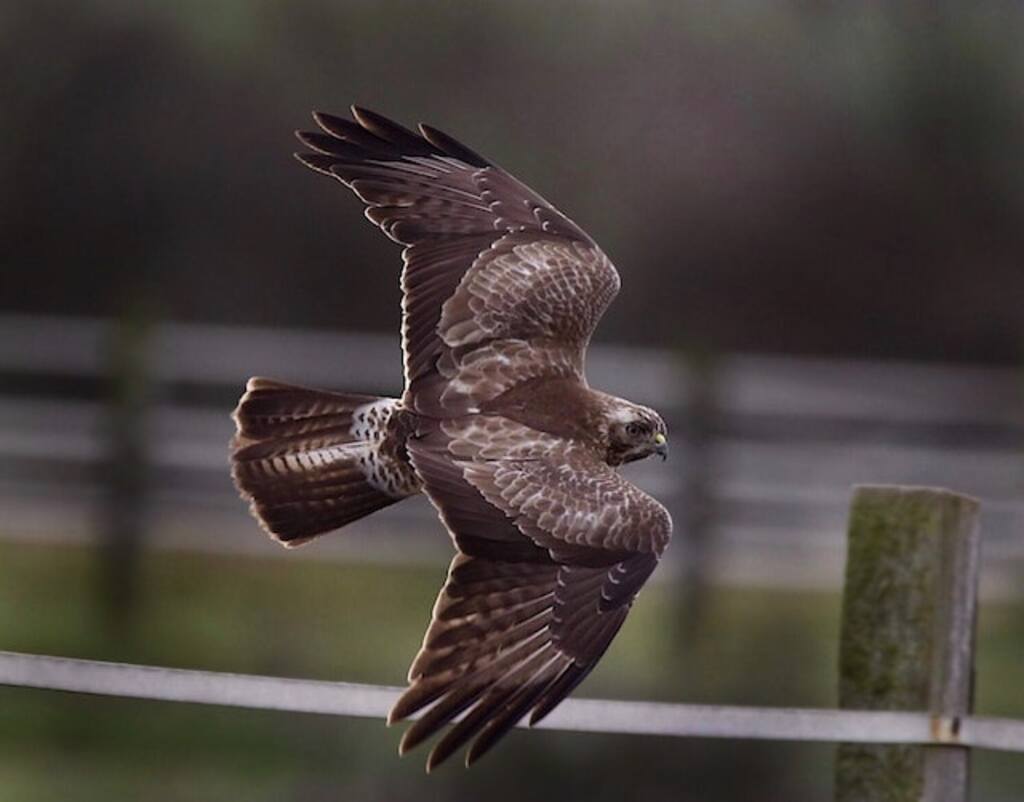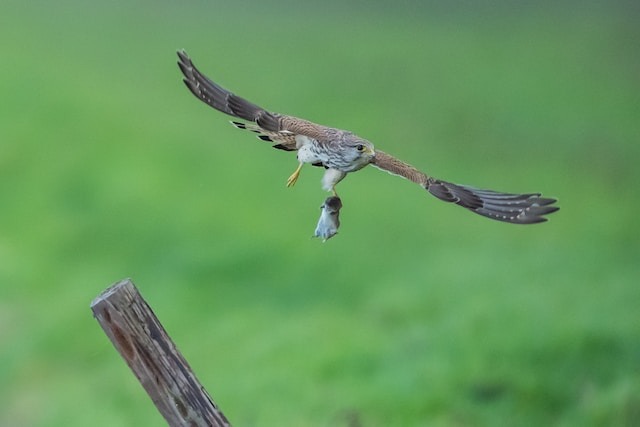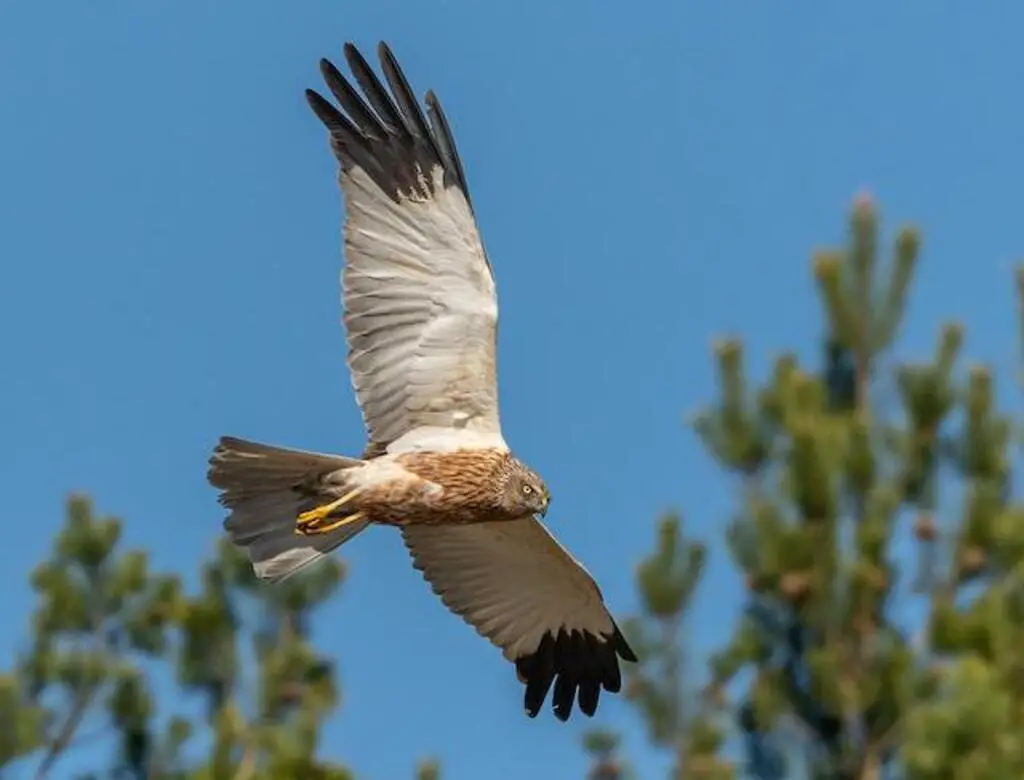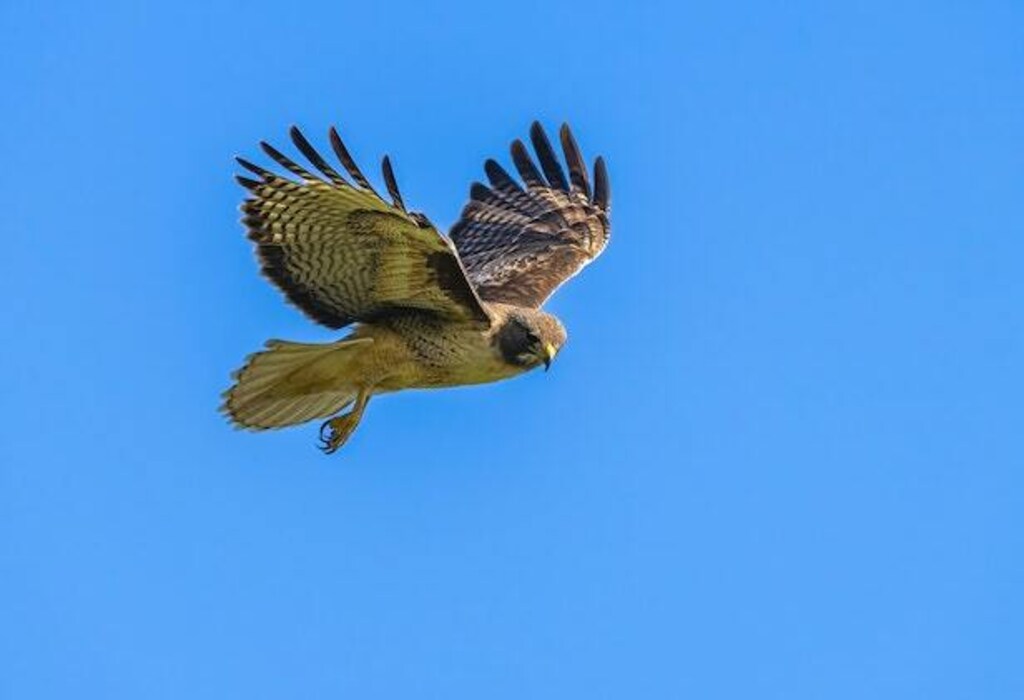Hawks, with their impressive hunting skills and sharp talons, captivate us as remarkable birds of prey. As members of the Accipitridae family, they employ various hunting techniques.
But do hawks drop their prey to kill it? This intriguing question has fueled debates among bird enthusiasts.
By exploring their hunting methods and behavior, we unravel the mysteries of these fascinating creatures and gain insights into their survival strategies in the wild.
Let’s delve into the captivating world of hawks and discover the truth behind their hunting prowess.
Table of Contents
Do Hawks Drop Their Prey To Kill It?
While hawks are known to employ various hunting techniques, the specific behavior of dropping their prey from a height is commonly referred to as the “drop method.”
This hunting strategy is observed in certain hawk species, including the Red-tailed Hawk, where they drop their prey to stun or kill it before capturing it.
However, it’s worth mentioning that not all hawks utilize this method, and hunting techniques can differ among different hawk species and individual birds.

Hawk Hunting Techniques
Overview of Hawk Hunting Techniques
Hawks are known for their prowess as hunters, and they use a variety of techniques to catch their prey. While some hawks hunt from a perch or while on the ground, most species are aerial hunters that use their speed and agility to hunt on the wing.
These birds use a combination of stealth, speed, and accuracy to capture their prey, which can range in size from small insects to large mammals such as rabbits.
Stooping and Diving Techniques
One of the most impressive hunting techniques used by hawks is the stoop or dive. In this technique, the hawk will climb high into the sky before folding its wings and diving towards its prey at incredible speeds of up to 200 miles per hour.
The hawk will often tuck its wings close to its body when it reaches its target, which helps it maintain control during the dive.
Once it is close enough, the hawk will open its talons and snatch up its prey. Another technique used by some hawks is called “rolling”.
In this technique, the hawk dives towards its prey but then rolls sideways in mid-air just before making contact with it.
This allows the bird to avoid any potential risks associated with striking directly at an animal that may fight back.
Description of Hovering Technique
In addition to stooping and diving techniques, many hawks also use hovering as a hunting technique. This technique involves flying in place high above an area where potential prey may be located.
The hawk will then hover while scanning for movements on the ground below using keen eyesight that is many times better than humans’.
When it spots prey moving below it executes a quick descent on them. Hawks that employ this hunting technique include kestrels which have exceptional hovering capabilities due to their lightweight bodies.
The technique is also commonly used by hawks hunting rodents, as it allows them to remain stationary in the air while they search for their target.
Once they locate a target, they can dive down and catch it with incredible accuracy and speed.
Hawks use different hunting techniques like stooping, diving, rolling, and hovering to get their prey. These techniques showcase the impressive skill and agility of these amazing birds of prey.
Hawk Prey Selection
Types of prey hawks hunt
Hawks are birds of prey that are known for their hunting skills. They are carnivores, which means they feed on other animals.
There are different types of prey that hawks hunt, and the type of prey they hunt depends on their size, habitat, and hunting techniques.
Some of the common types of prey that hawks hunt include rodents such as mice and rats, insects such as grasshoppers and cicadas, reptiles such as snakes and lizards, amphibians such as frogs and toads, and birds such as doves and finches.
The type of prey a hawk hunts also depends on the species of hawk.
For example, the red-tailed hawk is known to hunt rabbits while the Cooper’s hawk is known to hunt small birds. The bald eagle is another example of a hawk that hunts fish primarily.
Factors that influence prey selection
There are several factors that influence a hawk’s choice of prey. One factor is the availability of food in its habitat. If there is an abundance of one type of prey in an area where a hawk lives, it will likely choose to focus on hunting that particular animal.
Another factor is the time of year. Hawks may switch their diet based on what is available during different seasons.
For example, during winter months when small mammals may be scarce due to colder temperatures or snow cover over vegetation reducing forage availability , hawks may switch to hunting birds or even carrion (dead animals).
A third factor affecting choice can be related to competition between predators for resources within a given habitat (e.g., if there are many eagles competing for fish in a given river system).
Importance Of Size And Weight In Prey Selection
The size and weight play an important role in prey selection for hawks. Hawks have different size and weight capabilities, and therefore, can only hunt prey that is within their limits.
For example, a small hawk like the American kestrel will not be able to hunt large prey such as rabbits or squirrels. Similarly, the weight of the prey also affects a hawk’s ability to hunt it.
A lighter prey will be easier for a hawk to carry while flying and maneuvering around. This is why hawks often prefer smaller birds or rodents as they are lighter in weight.
In addition to size and weight, hawks also consider the agility of their potential prey.
Birds with quick flight patterns may be more difficult for a hawk to catch than slower moving animals like ground-dwelling rodents.

The Drop Technique: How Hawks Use Gravity to Kill Their Prey
Hawks are known for their impressive hunting skills and the drop technique is one of their most fascinating hunting methods.
The drop technique or “stoop” involves a hawk soaring high in the sky, then quickly diving towards its prey at incredible speeds of up to 200 miles per hour.
When it reaches its target, the hawk drops its talons and grabs hold of the prey with great force.
The drop technique is an effective way for hawks to kill their prey because it uses gravity to increase the force of impact.
When a hawk dives towards its target, it gains potential energy due to its height above ground level.
As it descends, this potential energy is converted to kinetic energy, resulting in a greater force of impact on the prey when the hawk strikes.
The sharp claws on a hawk’s talons also help penetrate through feathers and fur while grabbing onto flesh.
One of the benefits of using this technique is that it allows hawks to capture prey that may be too fast or agile for them to catch otherwise.
Prey like rabbits or squirrels are quick and nimble creatures that can easily evade predators on land but have less mobility in flight.
Hawks can use their speed and agility during flight combined with this technique’s effectivity in order take down these animals easily. However, the drop technique also comes with some drawbacks.
Firstly, it requires an ample amount of space for hawks to fully execute this skill as they need enough room for acceleration which makes hunting around dense areas difficult.
Secondly, not all preys are vulnerable during mid-flight or when they’re moving at high speeds making this technique ineffective against certain types such as slow-moving rodents.
Overall, mastering techniques like the drop method is vital for any skilled predator such as hawks that rely on hunting as their primary survival mechanism in nature.
Although there are advantages and disadvantages to the drop technique, hawks continue to use it as a crucial tool in their hunting toolkit.
The Science Behind the Drop Technique
It is fascinating to learn how a hawk uses physics to kill its prey through the drop technique. This technique involves the hawk dropping from a high altitude and gripping its prey tightly with its talons.
The hawk’s talons play a crucial role in killing the prey by creating a puncture wound that damages vital organs.
Additionally, the hawk’s beak also plays an important role in helping it grab and hold onto its prey while attacking.
How does a Hawk’s Talons Work?
Hawks have sharp talons that are designed for hunting and killing. Their talons consist of powerful muscles and tendons that enable them to grip their prey tightly.
The tips of their talons are also razor-sharp, which allows them to puncture through their victim’s flesh easily.
When a hawk drops from above to capture its prey, it extends its legs forward and opens up its talons wide.
This action creates significant force as it impacts with the victim at high speed, allowing them to penetrate deep into their flesh quickly.
How does a Hawk’s Beak Work?
A hawk’s beak has evolved over time for capturing, killing and consuming various types of prey effectively. It is sharp and hooked at the tip to allow hawks to tear apart their victims’ flesh with ease.
The shape of the beak depends on what type of food they consume; for example, those that feed on insects have a thin, pointed beak, whereas those that eat small mammals or larger birds have strong, curved bills with serrated edges.
Both hawks’ talons and beaks work together in tandem when hunting down their prey. They are incredibly efficient tools that help make hunting easier for these birds.

The Role Of Practice In The Drop Technique
Mastering The Drop Technique Takes Consistent Practice
As with any skill, mastering the drop technique requires consistent practice. Young hawks learn this technique from their parents, and it takes time and effort to perfect it.
Hawks need to train their muscles, bones, and ligaments to become proficient in the drop technique.
They also need to develop their hunting instincts so that they can quickly assess the situation and act accordingly.
The drop technique is a dangerous maneuver that requires precision and skill if it is to be successful.
Hawks must practice this technique repeatedly until it becomes second nature. If they fail or miss their target, they risk getting injured or even killed by their prey.
Young Hawks Learn The Drop Technique From Their Parents
Young hawks learn the drop technique from watching their parents during hunting sessions. When young hawks are not yet able to hunt on their own, they accompany their parents on hunting expeditions where they observe how the adults hunt.
During these hunts, adult hawks demonstrate various techniques such as diving or hovering over prey. They also show young hawks how to use gravity when dropping onto prey.
These demonstrations help young hawks understand how to approach prey without injuring themselves.
As young hawks grow stronger and more skilled at hunting, they start practicing these techniques themselves until they become proficient in using them for themselves.
The Length of Time It Takes To Master The Drop Technique Varies
The length of time it takes for a hawk to master the drop technique varies depending on several factors such as age, species of hawk, environment and accessibility of prey.
Generally speaking though most young hawks take anywhere from several weeks up until six months before mastering this complex hunting maneuver.
As time goes by and with constant training coupled with experience gained through actual hunting sessions out in the wild, hawks become more adept at using the dropping technique until it becomes an integral part of their hunting routine.
Ultimately, practice is key to mastering the drop technique, and young hawks must start practicing early on under their parents’ supervision to hone this skill and become successful hunters.
Conclusion
Throughout this article, we have explored the fascinating world of hawk hunting techniques and specifically examined the question of whether hawks drop their prey to kill it.
We have learned that hawks use a variety of hunting techniques, including stooping and diving, hovering, and the drop technique.
While these techniques are all effective in their own way, the drop technique is particularly interesting because it enables hawks to use gravity to kill their prey with minimal effort.
We also discussed how hawks select their prey based on factors such as size and weight, and how they use physics to make the most of their hunting techniques.
We learned that a hawk’s talons and beak play important roles in its ability to capture and kill prey. Furthermore, we explored the role of practice in mastering the drop technique.
While young hawks learn this skill from their parents, it takes time for them to perfect it through practice.
While there is much still to be learned about hawk behavior and hunting techniques, our exploration into the topic provided some fascinating insights into these incredible raptors.
By understanding more about these birds’ habits and skills, we can not only appreciate them more fully but also develop strategies for protecting them in our environment.
Ultimately, by working together with nature rather than against it, we can create a more harmonious world for us all.

FAQs: Do Hawks Drop Their Prey To Kill It?
Why do hawks drop their prey?
Hawks may drop their prey from a height to stun or kill it before capturing it. The impact from the fall can incapacitate the prey, making it easier for the hawk to secure and consume its meal.
Which hawk species use the drop method?
The Red-tailed Hawk is one hawk species known to employ the drop method. This behavior is observed during hunting, where they dive towards their prey and drop it to increase their chances of a successful capture.
Is dropping prey a common hunting technique for hawks?
While dropping prey from a height is one hunting technique observed in certain hawk species, it is not the only method employed. Hawks use a variety of hunting techniques, including swooping, perching, and using their sharp talons to catch and kill prey.
Are all hawks capable of dropping their prey?
No, not all hawk species utilize the drop method. Hunting techniques can vary among different hawk species, and the ability to drop prey may be more commonly observed in certain species like the Red-tailed Hawk.
Do hawks always drop their prey from a height?
Dropping prey from a height is not a universal behavior among hawks. While some species may employ this method, many hawks rely on other hunting strategies such as aerial pursuit, stealth, or ambushing their prey rather than dropping it from a height.



